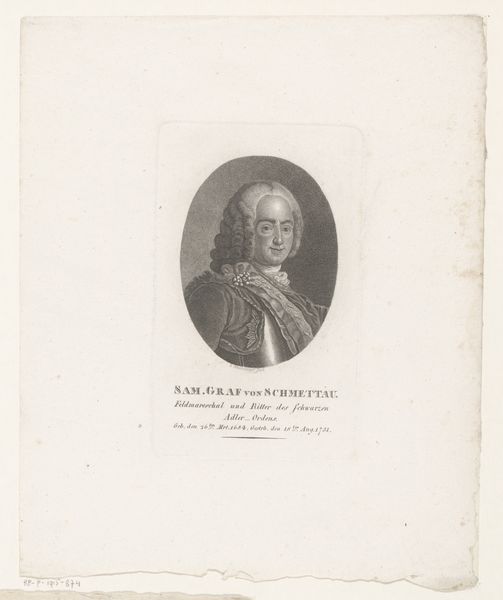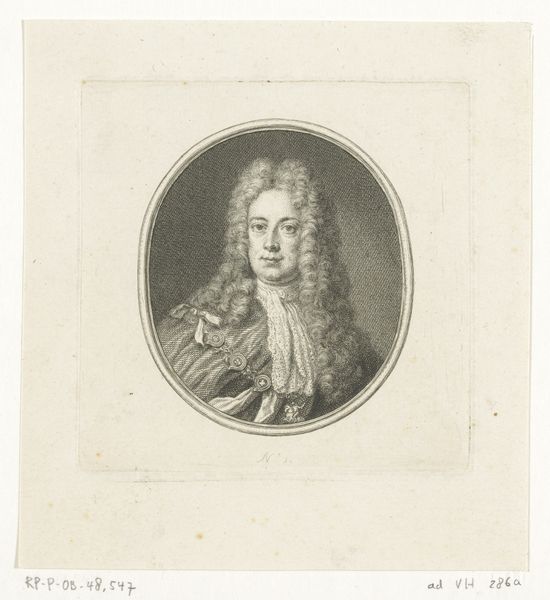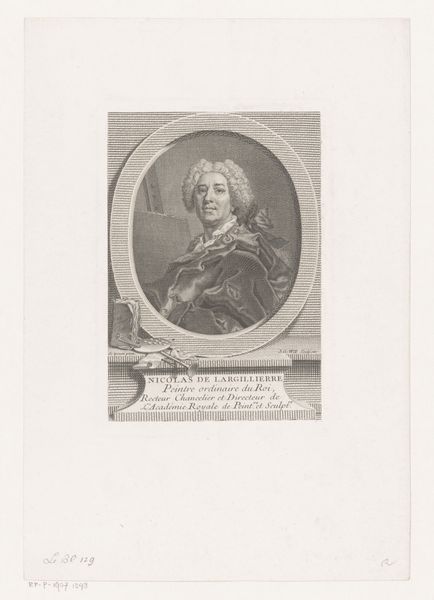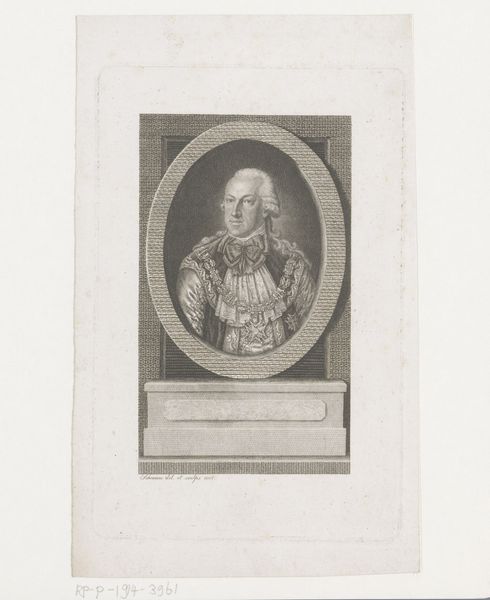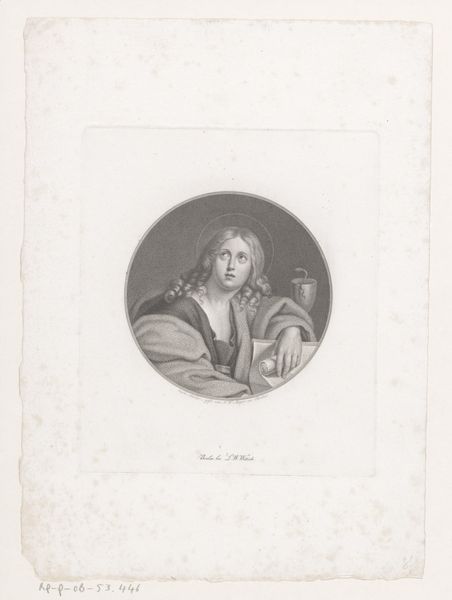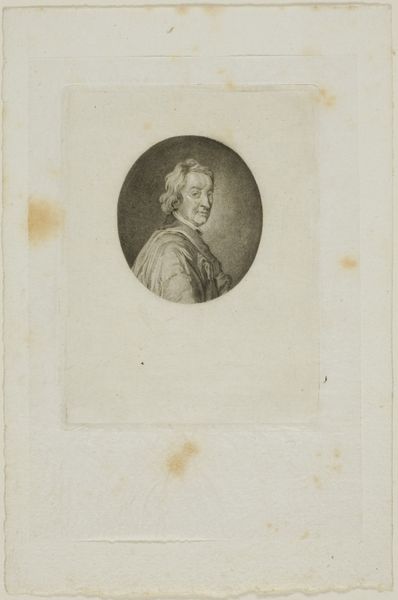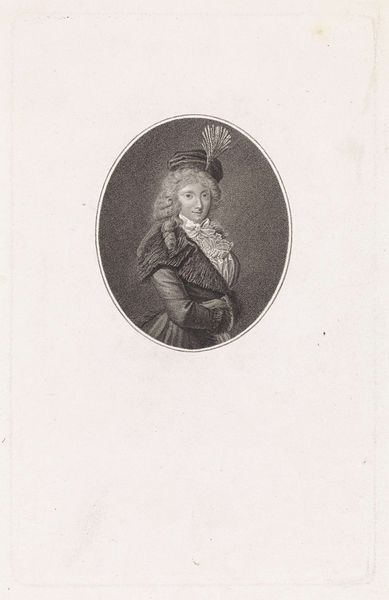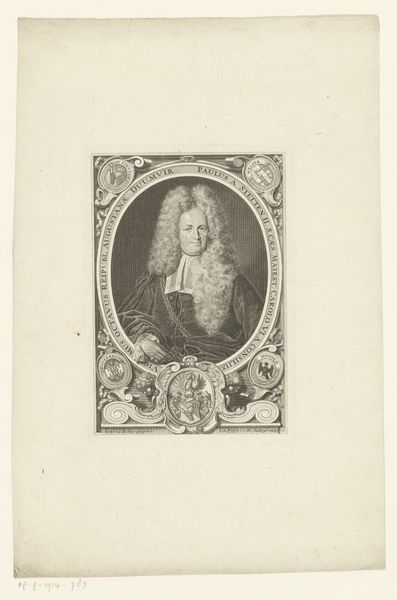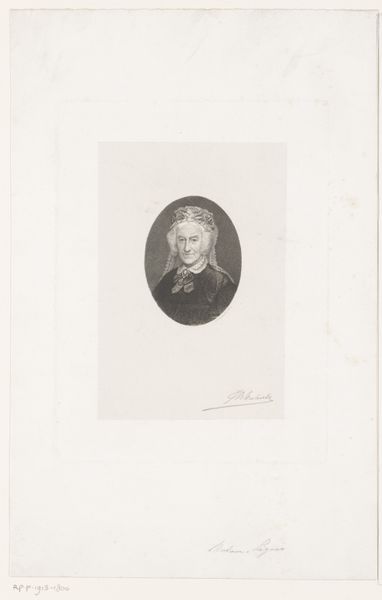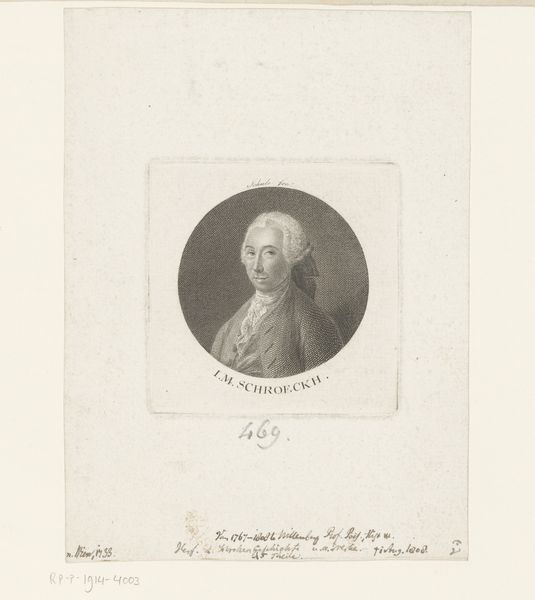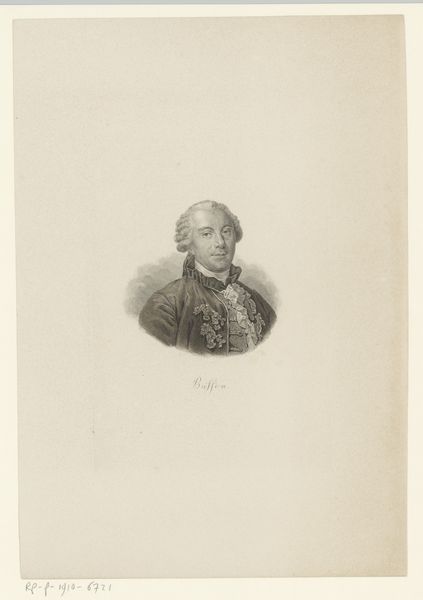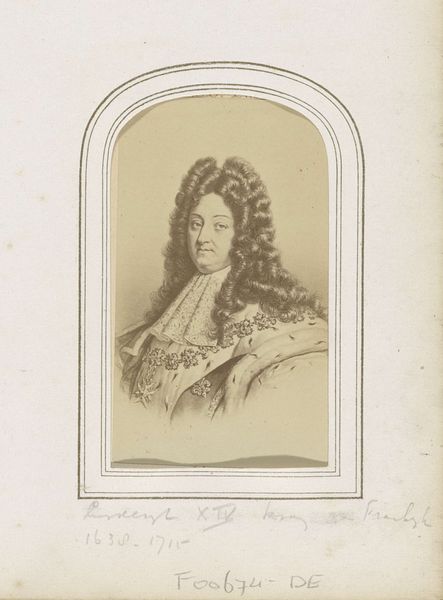
etching, engraving
#
portrait
#
etching
#
old engraving style
#
recolouration
#
line
#
history-painting
#
engraving
#
realism
Dimensions: height 228 mm, width 150 mm
Copyright: Rijks Museum: Open Domain
Jacob Ernst Marcus made this portrait of Cornelis Cruys using etching, a printmaking technique that democratized image production in the 18th and 19th centuries. The process begins with a metal plate, coated with a waxy, acid-resistant substance called the 'ground.' The artist scratches an image into the ground, exposing the metal. Then, the plate is immersed in acid, which bites into the exposed lines. These etched lines hold ink, which is then transferred to paper under great pressure, creating the final print. Here, the fine, closely-laid lines create shading and detail in the portrait. Marcus employed these techniques for mass production, playing a pivotal role in disseminating images and information during an era of burgeoning print culture. The proliferation of printed images influenced public opinion and consumer culture. So next time you look at a print, consider how its material process reflects its broader cultural impact, blurring lines between art, craft, and industry.
Comments
No comments
Be the first to comment and join the conversation on the ultimate creative platform.
